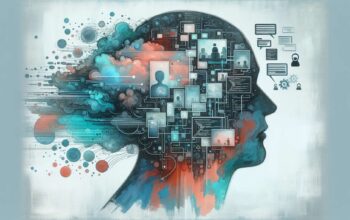Every day, we make countless decisions—from simple choices like what to have for breakfast to complex strategic decisions that can shape our careers and organizations. The difference between successful leaders and everyone else often lies not in the decisions they make, but in how they make them.
Decision-making frameworks provide structure, reduce bias, and increase the likelihood of positive outcomes. Whether you’re a software engineer choosing between architectural patterns, a manager allocating resources, or an entrepreneur deciding on market strategy, having a systematic approach to decision-making is crucial.
Why Decision-Making Frameworks Matter
Without a structured approach, our decisions are often influenced by cognitive biases, emotions, and incomplete information. Research shows that humans consistently make predictable errors in judgment, from anchoring bias to confirmation bias. Frameworks help us:
- Reduce the impact of cognitive biases
- Ensure we consider all relevant factors
- Create repeatable processes for similar decisions
- Improve decision quality and speed
- Build confidence in our choices
The DECIDE Framework: A Universal Approach
The DECIDE framework is one of the most versatile decision-making tools available. It works for both individual and group decisions across various contexts:
D – Define the problem clearly
Start by articulating exactly what decision needs to be made. Avoid solving the wrong problem by taking time to understand the root issue.
E – Explore the alternatives
Brainstorm multiple options. Don’t settle for the first solution that comes to mind. Consider both obvious and creative alternatives.
C – Consider the consequences
Evaluate the potential outcomes of each alternative. Think about short-term and long-term impacts, intended and unintended consequences.
I – Identify your values
What matters most in this decision? Clarify your priorities and constraints to guide your evaluation.
D – Decide and take action
Based on your analysis, choose the best alternative and commit to implementing it.
E – Evaluate your decision
After implementation, assess the results. What worked? What didn’t? Use these insights to improve future decisions.
The 10-10-10 Rule: Time-Based Perspective
Developed by journalist Suzy Welch, the 10-10-10 rule helps you gain perspective by considering how you’ll feel about a decision in different time frames:
- How will I feel about this in 10 minutes?
- How will I feel about this in 10 months?
- How will I feel about this in 10 years?
This framework is particularly useful for decisions involving trade-offs between immediate gratification and long-term benefits, such as career moves, investment choices, or lifestyle changes.
The Eisenhower Matrix: Prioritization Framework
While traditionally used for time management, the Eisenhower Matrix is excellent for decision prioritization. It categorizes decisions based on two dimensions:
- Urgent and Important: Make these decisions immediately
- Important but Not Urgent: Schedule time for these strategic decisions
- Urgent but Not Important: Delegate or use quick decision-making tools
- Neither Urgent nor Important: Consider if the decision needs to be made at all
Cost-Benefit Analysis: Quantifying Your Options
For decisions with measurable outcomes, cost-benefit analysis provides a systematic way to compare alternatives. This framework is particularly valuable in business contexts and involves:
Step 1: List all costs associated with each option (financial, time, opportunity costs)
Step 2: Identify all benefits (revenue, savings, intangible benefits)
Step 3: Assign monetary values where possible
Step 4: Calculate the net benefit for each option
Step 5: Consider qualitative factors that can’t be quantified
The SWOT Analysis for Strategic Decisions
When making strategic decisions, SWOT analysis helps you evaluate options by examining:
- Strengths: Internal factors that give you an advantage
- Weaknesses: Internal factors that put you at a disadvantage
- Opportunities: External factors you can leverage
- Threats: External factors that could cause problems
This framework is particularly useful for business decisions, career changes, and project planning.
The Six Thinking Hats: Exploring Multiple Perspectives
Edward de Bono’s Six Thinking Hats method helps you examine decisions from different angles:
- White Hat: Focus on facts and information
- Red Hat: Consider emotions and feelings
- Black Hat: Think about risks and potential problems
- Yellow Hat: Look for benefits and positive outcomes
- Green Hat: Generate creative alternatives
- Blue Hat: Manage the decision-making process itself
Choosing the Right Framework
Different decisions require different frameworks. Consider these factors when choosing:
Decision complexity: Simple decisions may only need quick frameworks like 10-10-10, while complex strategic decisions benefit from comprehensive approaches like SWOT or Six Thinking Hats.
Time constraints: If you need to decide quickly, use streamlined frameworks. For important decisions with time to spare, invest in thorough analysis.
Stakeholder involvement: Group decisions often benefit from structured frameworks like DECIDE or Six Thinking Hats that ensure all perspectives are considered.
Data availability: Quantitative frameworks like cost-benefit analysis work best when you have reliable data. Qualitative frameworks are better for decisions with intangible factors.
Implementing Decision-Making Frameworks
To make frameworks part of your regular practice:
Start small: Begin by applying frameworks to low-stakes decisions to build familiarity and confidence.
Create templates: Develop templates for your most commonly used frameworks to speed up the process.
Document your process: Keep records of your decision-making process and outcomes to improve over time.
Practice regularly: Like any skill, decision-making improves with practice. Make frameworks a habit, not an exception.
Common Pitfalls to Avoid
Even with frameworks, certain traps can undermine decision quality:
Analysis paralysis: Don’t let the framework become an excuse for delayed action. Set deadlines for decision-making.
Over-reliance on frameworks: Frameworks are tools, not substitutes for judgment. Sometimes intuition and experience are equally important.
Ignoring implementation: The best decision poorly executed is worse than a good decision well executed. Consider implementation challenges in your framework.
Failing to adapt: Different situations may require different approaches. Don’t force-fit every decision into the same framework.
Building Your Decision-Making Toolkit
Effective decision-makers have multiple frameworks at their disposal. Start building your toolkit by:
- Mastering one framework thoroughly before adding others
- Identifying which types of decisions you make most frequently
- Learning frameworks that complement your natural thinking style
- Experimenting with different approaches to find what works best
Remember, the goal isn’t to complicate decision-making but to make it more systematic, thorough, and effective. The right framework at the right time can transform uncertain choices into confident strategic moves.
By incorporating these decision-making frameworks into your regular practice, you’ll find yourself making better choices with greater confidence and consistency. Start today by choosing one framework and applying it to a decision you’re currently facing. Your future self will thank you for the investment.






